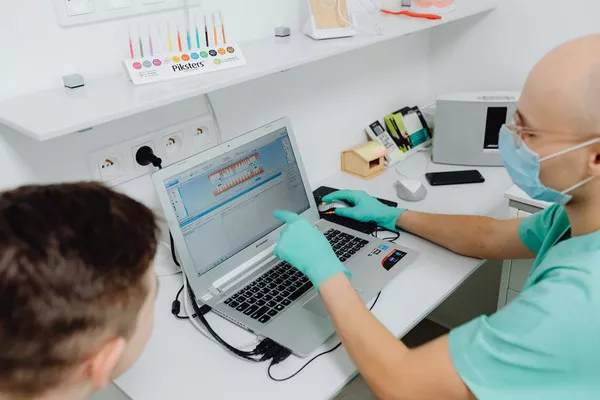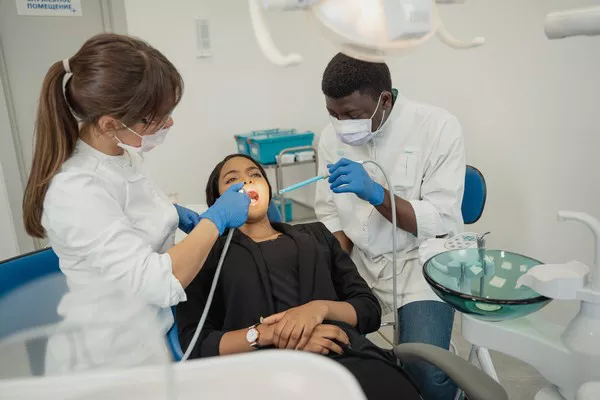Dental implants have revolutionized modern dentistry by offering a long-term solution for replacing missing teeth. Unlike removable dentures or bridges, dental implants are fixed in place and mimic the natural structure of a tooth, providing stability, functionality, and aesthetic appeal. This article explores the various components of a dental implant, highlighting their roles in restoring dental health and improving quality of life.
The Three Main Parts
Dental Implant (Fixture)
At the core of every dental implant is the fixture, typically made of titanium—a biocompatible material known for its durability and ability to integrate with bone tissue. The implant resembles a small screw that is surgically inserted into the jawbone, where it functions as an artificial tooth root.
The process by which the implant integrates with the surrounding bone is called osseointegration. This critical phase ensures the stability and strength of the implant by allowing bone cells to adhere and grow around the titanium surface. Over a period of several months, the bone fuses with the implant, providing a solid foundation for the prosthetic tooth.
Abutment
The abutment serves as an intermediary component that connects the implant fixture to the visible crown. Positioned above the gum line, the abutment is custom-designed to fit precisely onto the implant and facilitate the attachment of the prosthetic tooth.
During the healing phase following osseointegration, the abutment may be placed either at the time of implant surgery or during a separate procedure once the gum tissue has healed. Its primary function is to provide a stable base onto which the final restoration (crown) can be securely mounted.
Crown
The crown is the visible part of the dental implant that replicates the appearance and function of a natural tooth. Custom-made to match the color, shape, and size of neighboring teeth, the crown is crafted from durable materials such as porcelain, ceramic, or a combination of materials designed for optimal aesthetics and functionality.
Once the abutment is in place, the dental laboratory fabricates the crown to ensure a seamless integration with the patient’s smile. The crown is attached to the abutment either through cementation or screw retention, depending on the specific design and preferences of the dentist.
See Also: Can Dental Implants Be Removed And Replaced
Optional Components
Bone Graft
In some cases, patients may require a bone graft procedure before dental implant placement. This procedure is necessary when the jawbone lacks the adequate density or volume to support an implant securely. A bone graft involves transplanting bone tissue from another part of the body or using synthetic bone material to augment the existing bone structure.
Bone grafting promotes bone regeneration and strengthens the jawbone, creating a stable foundation for successful implantation. After the grafting procedure, a healing period is typically required to allow the new bone to fuse with the existing bone before proceeding with implant placement.
Sinus Lift
A sinus lift, also known as sinus augmentation, is a specialized procedure performed when there is insufficient bone height in the upper jaw, particularly in the area of the premolars and molars. The maxillary sinus, located above the upper jaw, may need to be lifted or augmented with bone graft material to create adequate space for implant placement.
This surgical technique involves accessing the sinus membrane through a small incision in the gum tissue. Once the sinus membrane is gently lifted, bone graft material is packed into the space beneath it to encourage new bone growth. After the sinus lift procedure, a healing period is necessary before proceeding with implant surgery.
Healing Cap
Following implant placement, a healing cap—also known as a healing abutment—is often positioned over the implant site to protect the underlying structure and facilitate proper healing of the gum tissue. This temporary cap is designed to maintain the shape of the gum tissue and guide its growth around the implant during the initial recovery phase.
The healing cap serves as a protective barrier against infection and trauma while allowing the dentist to monitor the progress of osseointegration. Once the healing process is complete and the implant has successfully integrated with the bone, the healing cap is replaced with the final abutment and crown.
Conclusion
In conclusion, a dental implant consists of several integral components that work together to replicate the natural function and appearance of a missing tooth. The titanium implant fixture serves as a stable foundation within the jawbone, supported by the process of osseointegration. The abutment connects the implant to the crown, which is custom-designed to blend seamlessly with the patient’s smile.
Optional components such as bone grafting and sinus lifts may be necessary to enhance bone structure and support implant placement in challenging cases. Throughout the treatment process, including the placement of a healing cap, meticulous care and precision are essential to achieving optimal results.
For individuals considering dental implants as a restorative option, consulting with a qualified dentist or oral surgeon is recommended. These professionals can provide personalized advice, evaluate candidacy for treatment, and outline a comprehensive treatment plan tailored to individual needs and goals. By understanding the components and functions of dental implants, patients can make informed decisions about restoring their dental health and achieving a confident smile.
You Might Be Interested In
































